| | ||||||||||||||||||||
| ||||||||||||||||||||
All 16 seats in the Provincial Council (plus compensatory seats) | ||||||||||||||||||||
| Turnout | 61.98% | |||||||||||||||||||
|---|---|---|---|---|---|---|---|---|---|---|---|---|---|---|---|---|---|---|---|---|
This lists parties that won seats. See the complete results below.
| ||||||||||||||||||||
 |
|---|
Provincial Council elections were held in Greenland on 28 April 1967.
| | ||||||||||||||||||||
| ||||||||||||||||||||
All 16 seats in the Provincial Council (plus compensatory seats) | ||||||||||||||||||||
| Turnout | 61.98% | |||||||||||||||||||
|---|---|---|---|---|---|---|---|---|---|---|---|---|---|---|---|---|---|---|---|---|
This lists parties that won seats. See the complete results below.
| ||||||||||||||||||||
 |
|---|
Provincial Council elections were held in Greenland on 28 April 1967.
Members of the Provincial Council were elected by first-past-the-post voting in 16 single-member constituencies. Political parties or lists were entitled to compensatory seats if they received more than one-sixteenth of the valid votes cast (6.25%).
As the Inuit Party received more than 6.25% of the valid vote, they were entitled to a compensatory seat.
| Party | Votes | % | Seats | |
|---|---|---|---|---|
| Inuit Party | 852 | 7.34 | 1 | |
| KNAPK | 351 | 3.02 | 0 | |
| Johansen, Lynge, Olsen & Godtfredsen List | 286 | 2.46 | 0 | |
| Mørch & Nielsen List | 184 | 1.59 | 0 | |
| Independents | 9,931 | 85.58 | 16 | |
| Total | 11,604 | 100.00 | 17 | |
| Valid votes | 11,604 | 97.59 | ||
| Invalid/blank votes | 286 | 2.41 | ||
| Total votes | 11,890 | 100.00 | ||
| Registered voters/turnout | 19,184 | 61.98 | ||
| Source: Atuagagdliutit, Danmarks Statistik | ||||
The initial results in Nuuk showed independent candidates Peter K. S. Heilmann receiving 672 votes, following by Inuit Party candidates Thomas Berthels and Kaj Narup with 313 and 293 respectively. [1] Berthels was declared elected, as the Inuit Party candidate with the most votes. However, the result was challenged and a recount showed Heilmann with 700 votes, Narup with 326 and Berthels with 324, resulting in Narup replacing Berthels in the Provincial Council. [2]
Erik Egede died in 1967 and was replaced by Niels Holm . In 1968 Aron Davidsen was replaced by Erinarteq Jonathansen . In 1969 Kaj Narup was replaced by Peter Nielsen . [3]

Elections in the Netherlands are held for five territorial levels of government: the European Union, the state, the twelve Provinces, the 21 water boards and the 342 municipalities. Apart from elections, referendums were also held occasionally, but have been removed from the law in 2018. The most recent national election results and an overview of the resulting seat assignments and coalitions since World War II are shown at the bottom of this page.

There are three types of elections in Denmark: elections to the national parliament, local elections, and elections to the European Parliament. Referendums may also be called to consult the Danish citizenry directly on an issue of national concern.

The 1979 Spanish local elections were held on Tuesday, 3 April 1979, to elect all 67,505 councillors in the 7,870 municipalities of Spain and all 1,152 seats in 43 provincial deputations. The elections were held simultaneously with local elections in the four foral deputations of the Basque Country and Navarre and the ten island councils in the Balearic and Canary Islands.

The 1983 Spanish local elections were held on Sunday, 8 May 1983, to elect all 67,505 councillors in the 7,781 municipalities of Spain and all 1,024 seats in 38 provincial deputations. The elections were held simultaneously with regional elections in thirteen autonomous communities, as well as local elections in the three foral deputations of the Basque Country and the ten island councils in the Balearic and Canary Islands.

The 1987 Spanish local elections were held on Wednesday, 10 June 1987, to elect all 65,577 councillors in the 8,062 municipalities of Spain and all 1,028 seats in 38 provincial deputations. The elections were held simultaneously with regional elections in thirteen autonomous communities, as well as local elections in the three foral deputations of the Basque Country, the ten island councils in the Balearic and Canary Islands and the 1987 European Parliament election.
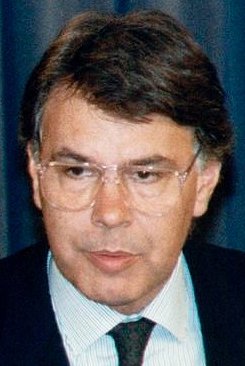
The 1991 Spanish local elections were held on Sunday, 26 May 1991, to elect all 66,308 councillors in the 8,060 municipalities of Spain and all 1,032 seats in 38 provincial deputations. The elections were held simultaneously with regional elections in thirteen autonomous communities, as well as local elections in the three foral deputations of the Basque Country and the ten island councils in the Balearic and Canary Islands.

The 1995 Spanish local elections were held on Sunday, 28 May 1995, to elect all 65,869 councillors in the 8,067 municipalities of Spain and all 1,034 seats in 38 provincial deputations. The elections were held simultaneously with regional elections in thirteen autonomous communities, as well as local elections in the three foral deputations of the Basque Country and the ten island councils in the Balearic and Canary Islands.

The 1999 Spanish local elections were held on Sunday, 13 June 1999, to elect all 65,201 councillors in the 8,104 municipalities of Spain and all 1,034 seats in 38 provincial deputations. The elections were held simultaneously with regional elections in thirteen autonomous communities, as well as local elections in the three foral deputations of the Basque Country, the ten island councils in the Balearic and Canary Islands and the 1999 European Parliament election.

Electoral district no. 1 is one of the 12 multi-member electoral districts of the Riigikogu, the national legislature of Estonia. The electoral district was established in 1995 following the re-organisation of the electoral districts in Tallinn. It is conterminous with the districts of Haabersti, Kristiine and Põhja-Tallinn in Tallinn. The district currently elects 10 of the 101 members of the Riigikogu using the open party-list proportional representation electoral system. At the 2019 parliamentary election it had 85,469 registered electors.
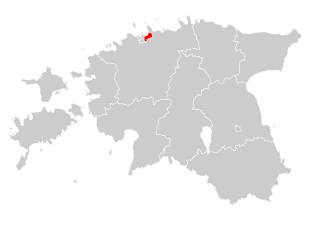
Electoral district no. 2 is one of the 12 multi-member electoral districts of the Riigikogu, the national legislature of Estonia. The electoral district was established in 1995 following the re-organisation of the electoral districts in Tallinn. It is conterminous with the districts of Kesklinn, Lasnamäe and Pirita in Tallinn. The district currently elects 13 of the 101 members of the Riigikogu using the open party-list proportional representation electoral system. At the 2019 parliamentary election it had 111,135 registered electors.
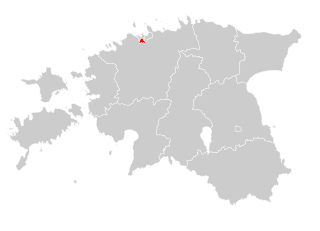
Electoral district no. 3 is one of the 12 multi-member electoral districts of the Riigikogu, the national legislature of Estonia. The electoral district was established in 1995 following the re-organisation of the electoral districts in Tallinn. It is conterminous with the districts of Mustamäe and Nõmme in Tallinn. The district currently elects eight of the 101 members of the Riigikogu using the open party-list proportional representation electoral system. At the 2019 parliamentary election it had 71,882 registered electors.

Electoral district no. 6 is one of the 12 multi-member electoral districts of the Riigikogu, the national legislature of Estonia. The district was established in 2003 when the existing electoral district no. 6 was split into two. It is conterminous with the county of Lääne-Viru. The district currently elects five of the 101 members of the Riigikogu using the open party-list proportional representation electoral system. At the 2019 parliamentary election it had 44,583 registered electors.
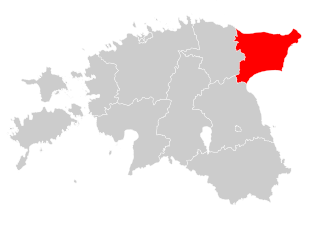
Electoral district no. 7 is one of the 12 multi-member electoral districts of the Riigikogu, the national legislature of Estonia. Established in 1992 when the Riigikogu was re-established following Estonia's independence from the Soviet Union, the district was abolished in 1995 following the re-organisation of electoral districts only to be re-established in 2003. It is conterminous with the county of Ida-Viru. The district currently elects seven of the 101 members of the Riigikogu using the open party-list proportional representation electoral system. At the 2019 parliamentary election it had 56,836 registered electors.
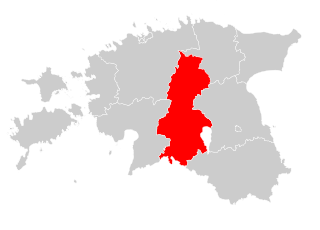
Electoral district no. 8 is one of the 12 multi-member electoral districts of the Riigikogu, the national legislature of Estonia. The district was established as electoral district no. 7 in 1995 following the re-organisation of electoral districts. It was renamed electoral district no. 8 in 2003 following another re-organisation of electoral districts. It is conterminous with the counties of Järva and Viljandi. The district currently elects seven of the 101 members of the Riigikogu using the open party-list proportional representation electoral system. At the 2019 parliamentary election it had 61,657 registered electors.
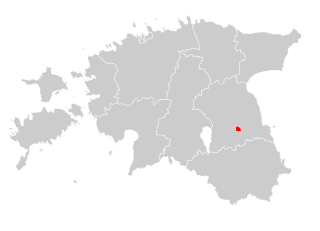
Electoral district no. 10 is one of the 12 multi-member electoral districts of the Riigikogu, the national legislature of Estonia. The district was established as electoral district no. 9 in 1995 following the re-organisation of electoral districts. It was renamed electoral district no. 10 in 2003 following another re-organisation of electoral districts. It is conterminous with the municipality of Tartu. The district currently elects eight of the 101 members of the Riigikogu using the open party-list proportional representation electoral system. At the 2019 parliamentary election it had 67,525 registered electors.

Electoral district no. 12 is one of the 12 multi-member electoral districts of the Riigikogu, the national legislature of Estonia. The district was established in 1992 when the Riigikogu was re-established following Estonia's independence from the Soviet Union. It was renamed electoral district no. 11 in 1995 following the re-organisation of electoral districts but reverted to electoral district no. 12 in 2003. It is conterminous with the county of Pärnu. The district currently elects seven of the 101 members of the Riigikogu using the open party-list proportional representation electoral system. At the 2019 parliamentary election it had 66,852 registered electors.

Snap general elections were held in Greenland on 6 April 2021 alongside local elections. Inuit Ataqatigiit emerged as the largest party, winning 12 of the 31 seats in the Inatsisartut. The governing Siumut party finished second with 10 seats.
Provincial Council elections were held in Greenland on 16 April 1971.
Provincial Council elections were held in Greenland on 16 April 1975.
Provincial Council elections were held in Greenland on 28 June 1963. Independents won all 16 Seats in the Provincial Council. There were no political parties in the race, and the position of Chairman was not yet established.